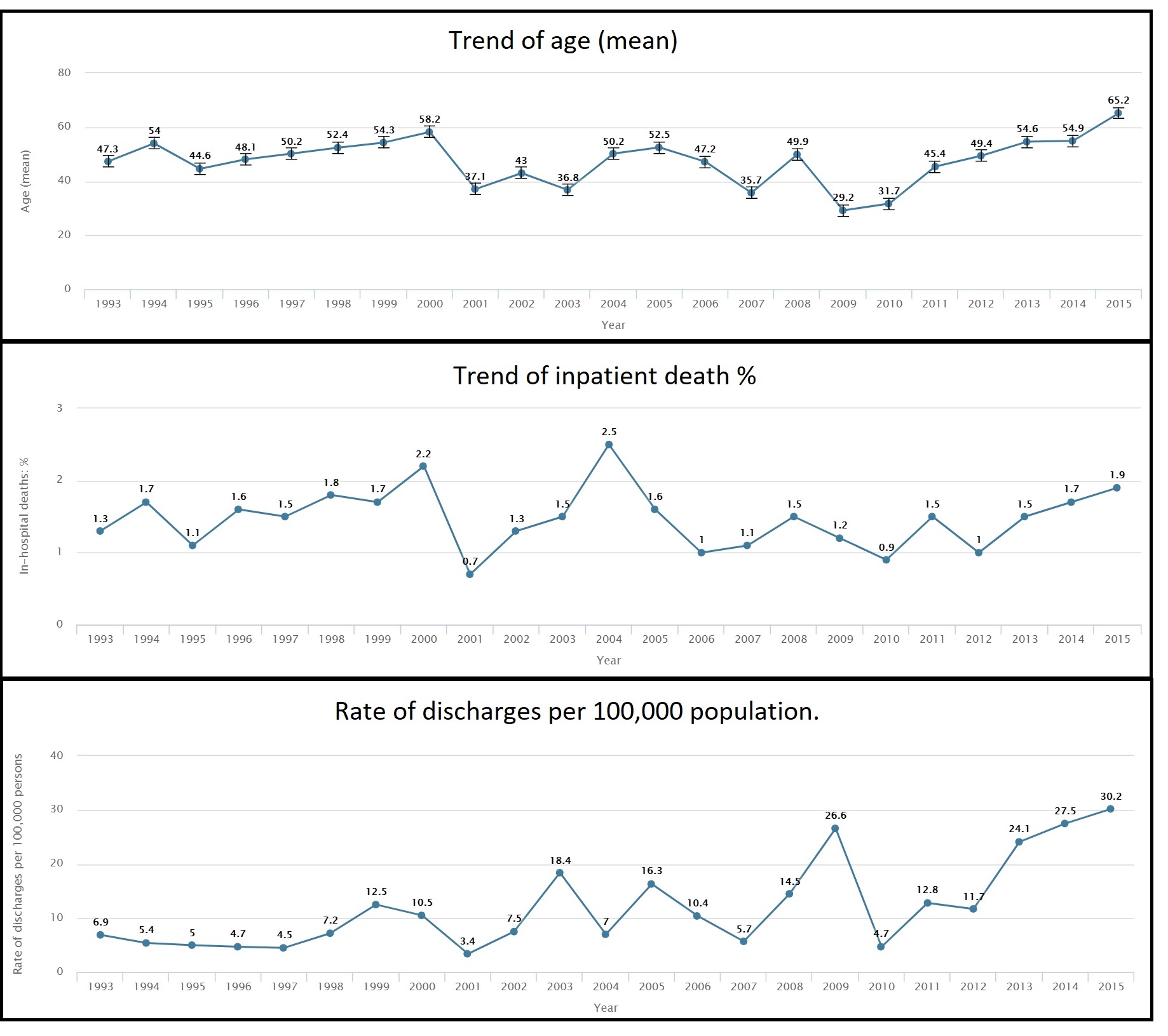Background: There is a significant impact of influenza on the individuals, families, and societies, both economically and clinically, in terms of hospital admissions, medication expenses and side effects, secondary bacterial infections and more days off from work or other forms of reduced productivity for the patients or their caretakers. Our objective is to present the trends in the rate of hospital discharges per 100,000 population from the years 1993 through 2015, the mean age, and the inpatient mortality rate.
Methods: This is a retrospective study utilizing The National Inpatient Sample (NIS) from 1993 through 2015. Discharges due to influenza from 1993 to 2015 were identified by using ICD-9 sorted by Clinical Classification Software (CCS). The rate of discharges per 100,000 population, inpatient mortality, and mean age were trended. Linear regression used to assess if the deviation from horizontal is statistically significant for the trends of the rate of discharges per 100,000 population, mean age, and percentage of the inpatient mortality.
Results: The mean age and the inpatient mortality vary from year to year. The linear regression analysis for the trends was not statically significant, for the percentage of the inpatient mortality, the deviation from horizontal is not significant, P-value 0.75 and F value: 0.09. Similarly, to the mean age, deviation from horizontal is not significant with a P-value of 0.97 and an F value of 0.001. However, the linear regression analysis for the rate of discharges per 100.000 population was remarkable for a statistically significant deviation from the horizontal with a P-value of 0.0002 and an F value of 19.5.
Conclusions: Recent advancements in influenza detection made the detection feasible, quick and cost-effective. However, the role of these advanced modalities on the outcome is still controversial. Our analysis revealed a significant increase in the rate of discharges due to influenza but there is no significant change in the parentage of the inpatient mortality over the years between 1993-2015.Advanced influenza virus detection tests are now recommended in both outpatient (including emergency department) and inpatient admissions. The recent increase in the inpatient admissions could be due to better detection modalities. However, no change in the percentage of the inpatient mortality makes the impact of these detections test on the outcome questionable. A further prospective study is warranted to assess the impact of these tests on the outcome.

